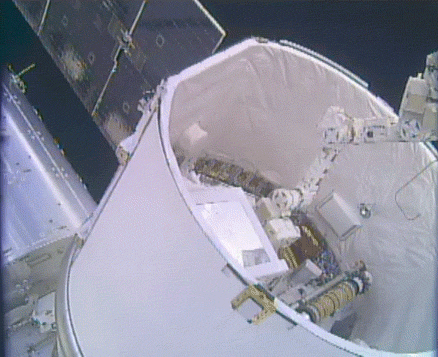NICER data helps create 1st pulsar surface map
/An instrument aboard the International Space Station has obtained the “best-ever” measurements of a pulsar and helped scientists create the first surface map of this special type of neutron star.
Using NASA’s Neutron star Interior Composition Explorer, or NICER, astrophysicists were able to gather “precise and dependable” X-ray measurements to determine the size and mass of a pulsar, which is a highly-magnetized, rapidly-spinning neutron star. Because of the accuracy of this data, a map of “hot spots” on its surface was created, showing its appearance “differs dramatically” from textbook depictions, the U.S. space agency said.
A neutron star is the collapsed core of a massive star following its dramatic supernova death. They are the densest known objects in the universe, aside from black holes. Pulsars in particular are noteworthy because they emit beams of radiation from their magnetic poles. With their rapid spin, these beams appear to “pulse” as the object rotates, creating a lighthouse effect when the beam is in view of Earth.
“From its perch on the space station, NICER is revolutionizing our understanding of pulsars,” Paul Hertz, astrophysics division director at NASA Headquarters in Washington, said in a Dec. 12, 2019, agency news release. “Pulsars were discovered more than 50 years ago as beacons of stars that have collapsed into dense cores, behaving unlike anything we see on Earth. With NICER we can probe the nature of these dense remnants in ways that seemed impossible until now.”
The particular pulsar that NICER collected data on for this map is called J0030+0451. It is located roughly 1,100 light-years from Earth in the constellation Pisces.
According to NASA, a pulsar’s magnetic field is so strong, it can rip particles from its surface and accelerate them. Some of those particles follow the magnetic field to recontact the object producing million-degree hot spots. As it rotates, these hot spots can move in and out of view.
Because a pulsar is so massive, it distorts the space-time “fabric” around it. This allows light from parts of the far side of the object to be seen as photons “bend” around the curvature of the distortion. According to NASA, this means it’s possible the hot spots may never completely disappear as the pulsar rotates.
NASA said NICER measures the arrival of X-ray light from a pulsar to “better than a hundred nanoseconds,” which the agency says is about 20 times greater than previously available.
Using that data, two teams — one led by an astrophysics professor at the University of Amsterdam and another led by an astronomy professor at the University of Maryland — used the open-source data collected by NICER to create a detailed map of its hot spots and determine the pulsar’s size and mass.
NASA said the Amsterdam team measured the mass at 1.3 times that of the Sun and 25.4 kilometers wide while the Maryland team came up with 1.4 solar masses and 26 kilometers wide.
“When we first started working on J0030, our understanding of how to simulate pulsars was incomplete, and it still is,” Thomas Riley, the team lead for the Amsterdam team, said in a NASA news release. “But thanks to NICER’s detailed data, open-source tools, high-performance computers and great teamwork, we now have a framework for developing more realistic models of these objects.”
Traditional models of pulsars show the object with two hot spots at each magnetic pole. However, the maps of J0030 are much more complicated than that, NASA said.
The Amsterdam-led team identified two hot spots — one small and circular and the other long and crescent-shaped — while that Maryland-led team found two possible solutions — one with two ovals similar to the Amsterdam team and another with a third, slightly cooler spot. Both teams found the hot spots to be near the pulsars southern hemisphere. The reason for that is currently unknown.
“It’s remarkable, and also very reassuring, that the two teams achieved such similar sizes, masses and hot spot patterns for J0030 using different modeling approaches,” said Zaven Arzoumanian, NICER science lead at NASA’s Goddard Space Flight Center in Greenbelt, Maryland. “It tells us NICER is on the right path to help us answer an enduring question in astrophysics: What form does matter take in the ultra-dense cores of neutron stars?”
The ultimate science goal of NICER, according to NASA, is to better understand the state of matter in the core of neutron stars. These objects are so dense, NASA said a sugar-cube-sized amount would weigh more than 1 billion tons on Earth, which is about the same as Mount Everest.
NICER was launched in 2017 inside the trunk of a SpaceX Dragon spacecraft. The 372-kilogram instrument was installed on Express Logistics Carrier 2 on the S3 truss segment. According to NASA, during each ISS orbit, the instrument observes two to four targets. It tracks these objects using gimbaling and a star tracker.
This wasn’t the first major discovery using NICER. In May 2018, it was announced the instrument found a pulsar in the fastest stellar orbit discovered to date. According to NASA, the pulsar and its companion star orbit each other every 38 minutes.
Additionally, in August 2019, NICER spotted the brightest X-ray burst ever observed — from a neutron star some 11,000 light-years from Earth in the constellation Sagittarius.






